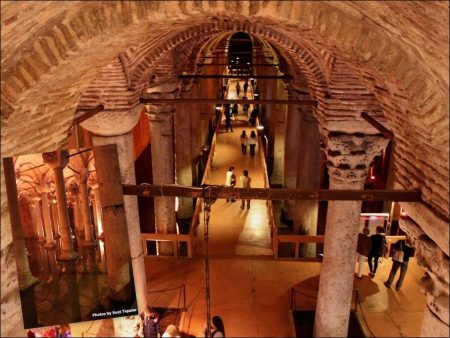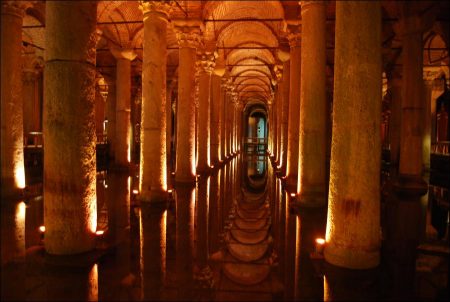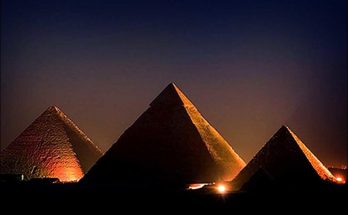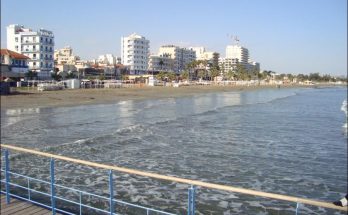The Basilica Cistern is the largest of several hundred ancient cisterns that lie beneath the city of Istanbul (formerly Constantinople), Turkey. The cistern, located 500 feet (150 m) southwest of the Hagia Sophia on the historical peninsula of Sarayburnu, was built in the 6th century during the reign of Byzantine Emperor Justinian I.
The name of this subterranean structure derives from a large public square on the First Hill of Constantinople, the Stoa Basilica, beneath which it was originally constructed. Before being converted to a cistern, a great Basilica stood in its place, built between the 3rd and 4th centuries during the Early Roman Age as a commercial, legal and artistic centre. The basilica was reconstructed by Illus after a fire in 476.
Ancient texts indicated that the basilica contained gardens, surrounded by a colonnade and facing the Hagia Sophia. According to ancient historians, Emperor Constantine built a structure that was later rebuilt and enlarged by Emperor Justinian after the Nika riots of 532, which devastated the city.
Historical texts claim that 7,000 slaves were involved in the construction of the cistern. The enlarged cistern provided a water filtration system for the Great Palace of Constantinople and other buildings on the First Hill, and continued to provide water to the Topkapi Palace after the Ottoman conquest in 1453 and into modern times.
Yerebatan Basilica Cisdern In Media
The cistern was used as a location for the 1963 James Bond film From Russia with Love. In the film, it is referred to as being constructed by the Emperor Constantine, with no reference to Justinian, and is located under the Soviet consulate. Its real-life location is a considerable distance from the former Soviet (now Russian) consulate, which is in Beyoğlu, the “newer” European section of Istanbul, on the other side of the Golden Horn.
In 1969 the cistern was used as a setting in Pawn in Frankincense, the fourth of the Lymond Chronicles books by Dorothy Dunnett.
The finale of the 2009 film The International takes place in a fantasy amalgam of the Old City, depicting the Basilica Cistern as lying beneath the Sultan Ahmed Mosque, which, in the film, is directly adjacent to the Süleymaniye Mosque.
The cistern is featured in Clive and Dirk Cussler’s 2010 Dirk Pitt fiction novel, Crescent Dawn and The Navigator.
In the 2011 video game, Assassin’s Creed: Revelations, the player controlled character, Ezio Auditore, is given the chance to explore a section of this cistern in a memory sequence entitled The Yerebatan Cistern.
The cistern is also featured in Jean-Baptiste Andrea’s film thriller Brotherhood of Tears (2013). In the sequence, the lead character, acting as a transporter (played by Jeremie Renier), delivers a suitcase to a mysterious client (played by Turkish actor Ali Pinar).
The cistern with its inverted Medusa pillar was used prominently in the climax of the new Dan Brown novel Inferno featuring Robert Langdon, where the antagonist planned to make his attack.
In the young adult Marvel novel Black Widow: Forever Red by Margaret Stohl, published in October 2015, the climactic scenes take place in the cistern and in a secret lab hidden behind it.
Views: 285




